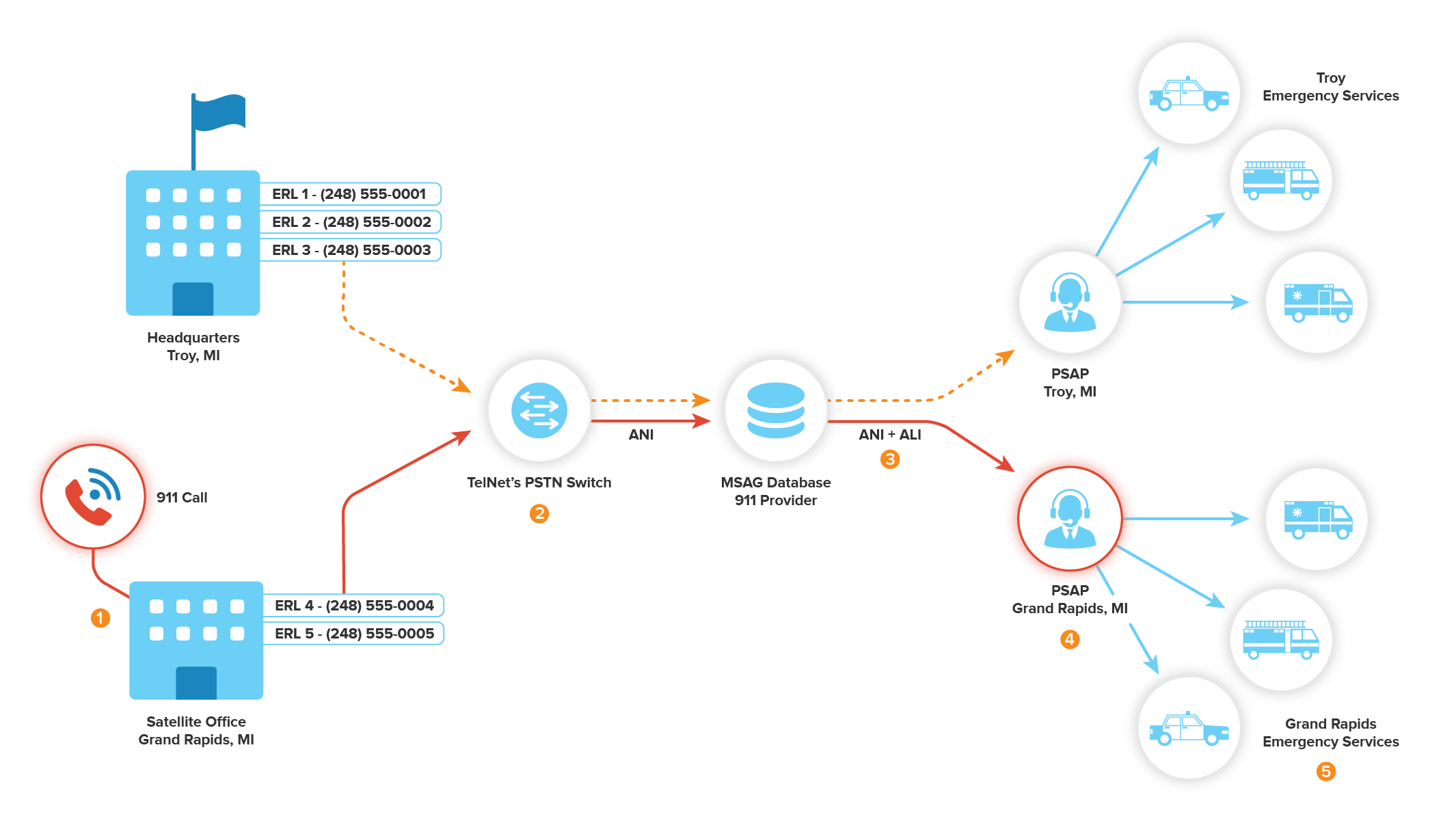Enhanced 911 (E911) has been around for awhile, providing public-safety answering points (PSAPs) with information about a caller’s location. While this has proven to be a critical tool in the event of an emergency, the accuracy of the information has varied widely, particularly in multi-line telephone systems (MLTS) commonly found in hotels, college campuses and multi-floor office buildings.
Consequently, the FCC has taken deliberate steps forward with RAY BAUM’s Act — and it’s going to have a lot of legal implications for organizations nationwide, particularly those with an MLTS. So let’s get into the details to ensure your compliance and safety.
RAY BAUM’s Act: Dispatchable Locations
RAY BAUM’s Act is all about getting granular with location information in order to assist emergency responders in quickly locating the caller. The Act dictates that a “dispatchable location” must be conveyed to the PSAP in the event of a 911 call, regardless of the technology platform used.
The FCC defines a dispatchable location as “the street address of the calling party, and additional information such as room number, floor number, or similar information necessary to adequately identify the location of the calling party.”
While sharing a street address might suffice for smaller offices or one-story buildings, the geographic diversity inherent in an MLTS provides significant challenges for a first response team.
E911 in Action
Let’s say that Steve makes a 911 call from the fifth floor of his company’s satellite office, but his organization hasn’t linked his desk phone to a unique emergency location identification number (ELIN) and subsequent granular location information (like building name, suite, floor or office number). It’s very possible that the PSAP will only receive the business’ primary outgoing number, rather than his unique extension.
This could obviously be catastrophic in the event of an emergency, especially if Steve is unable to verbally communicate with the PSAP. While the PSAP is directing an emergency response team to the organization’s headquarters in Troy, Steve is desperately waiting for help in Grand Rapids.
The importance for the proper 911 configuration of an MLTS is obvious. Each designated emergency response location (ERL) needs to be associated with its own ELIN and granular location information. That way, emergency response teams have the best chance of finding a caller and resolving the issue.
Corporate Compliance
RAY BAUM’s Act — which stands for Repack Airwaves Yielding Better Access for Users of Modern Services — was signed into law in 2018. The regulation is named in honor of former Staff Director of the Energy and Commerce Committee Ray Baum, who worked closely with the FCC before his passing in 2018 from a long battle with cancer.
The rules of the Act apply to a variety of technologies, including fixed and non-fixed MLTS devices, fixed telephony systems and VoIP solutions, though initial compliance dates vary. For fixed services — MLTS, interconnected VoIP, telephony and telephone relay services (TRS) — January 6, 2021 is the initial compliance date in accordance with the FCC. For non-fixed services — MLTS, interconnected VoIP, TRS — compliance requirements will go into effect in January of 2022.
No matter what technology you employ, all of our 911 services are fully compliant with RAY BAUM’s Act. TelNet’s service supports granular location information, and can be input and updated through our Customer Service Portal. But if you’re looking for more information or assistance, don’t hesitate to get in touch!






